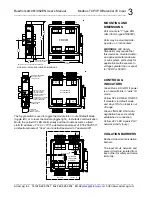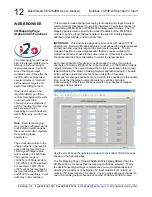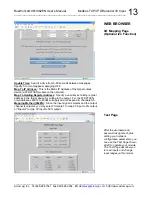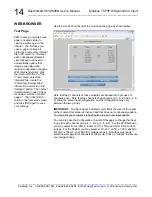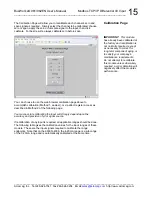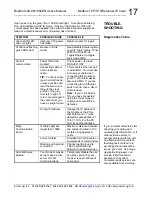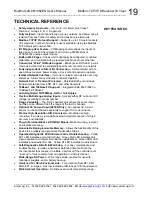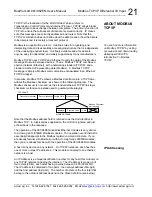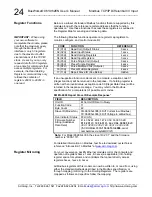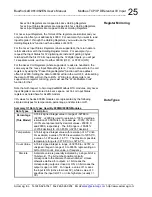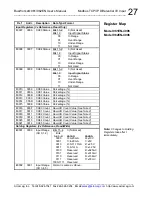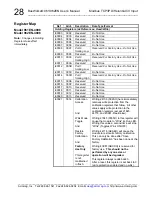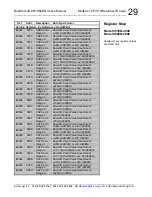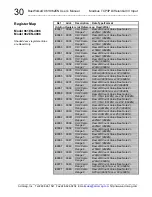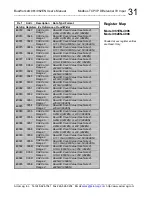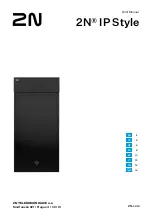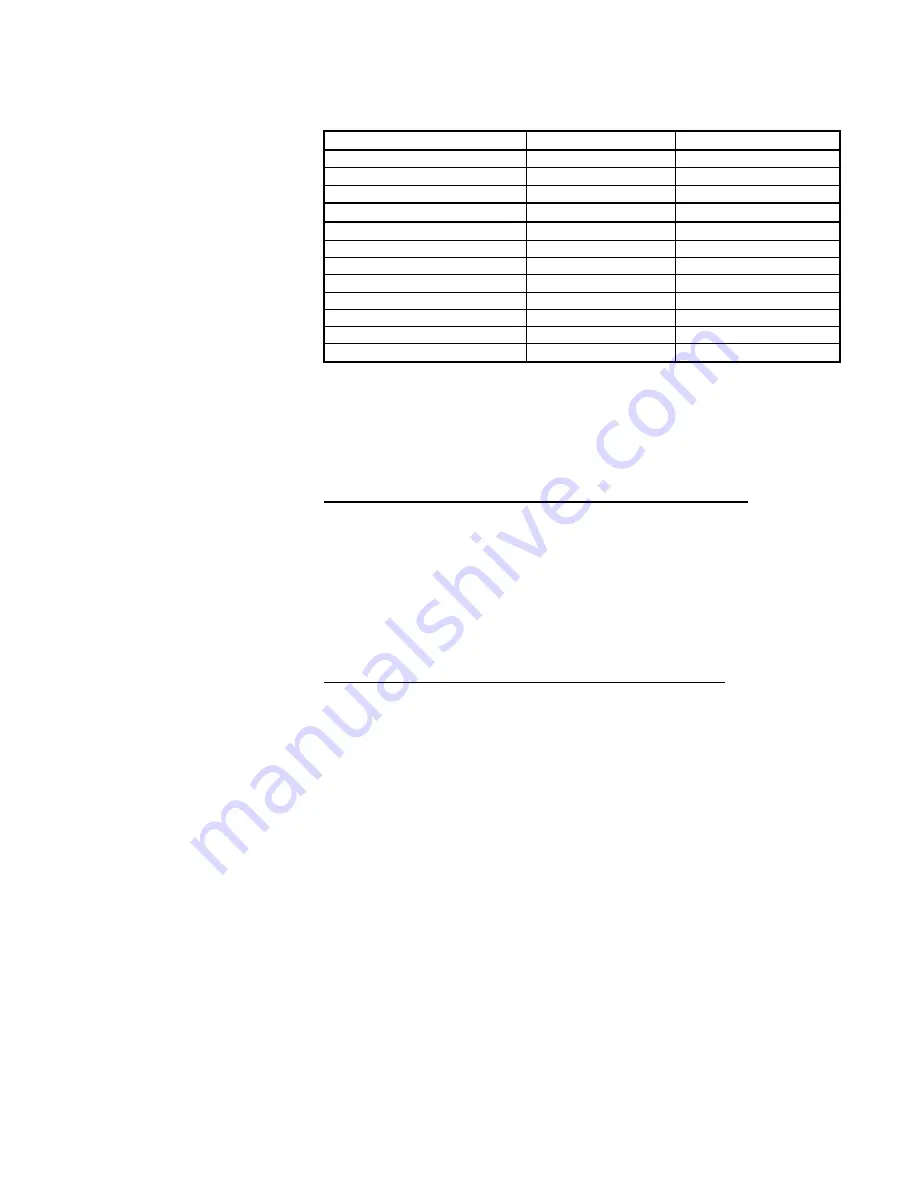
BusWorks® 961/962EN User’s Manual Modbus TCP/IP Differential I/V Input
__________________________________________________________________
_______________________________________________________________________________________
Acromag, Inc. Tel:248-624-1541 Fax:248-624-9234 Email:
sales@acromag.com
http://www.acromag.com
16
Model 961EN-4006 Range
ZERO Calibration
FS Calibration
0-20mA DC, 4-20mA DC
1.0mA
20.0mA
0-11.17mA DC
1.0mA
11.17mA
0-1mA DC
0.25mA
1.00mA
Model 962EN-4006 Range
ZERO Calibration
FS Calibration
±10V DC
-10000.0mV
10000.0mV
±5V DC
-5000.0mV
5000.0mV
±2.5V DC
-2500.0mV
2500.0mV
±1.25V DC
-1250.0mV
1250.0mV
±625mV DC
-625.0mV
625.0mV
±313mV DC
-312.50mV
312.50mV
±156mV DC
-156.25mV
156.25mV
±78mV DC
-78.13mV
78.13mV
Note (961EN):
The 4-20mA range is calibrated with the 0-20mA range and
is not calibrated separately. All other ranges are calibrated separately.
IMPORTANT:
For best results, be sure to use a precision signal source
capable of reproducing the nominal endpoint signals at least as accurate as
the module itself (better than ±0.1% of span). Always allow the module to
warm up a few minutes prior to calibration.
Method 1 – Calibration Using The Built-In Browser Interface:
1. Make sure that the range that needs calibrating is currently selected.
2. Bring up browser interface and select calibration page.
3. Apply either the zero or span input signal to the channel to be calibrated.
Calibrate the zero endpoint signal first, before the span endpoint signal.
4. Wait about 10 seconds for the input to settle and be read.
5. Click on the channel number and select either zero or span calibration.
6. Click on the “Calibrate” button. The page will refresh and calibration may
continue. Repeat this process for the other endpoint (span).
7. Repeat steps 2-5 for the other input channels to be calibrated.
Method 2 - Calibration Via The Modbus TCP/IP Interface:
1. Write to the appropriate Port Input Range Register to select the input
range to be calibrated for your channel of interest.
2. Write 24106 (5E2AH) into the Calibration Access Register to remove
write protection from the calibration registers.
3. Apply the zero calibration signal (Cal Lo, see table) to the input to be
calibrated and allow the input to settle about 10 seconds.
4. Write a 16-bit value to the Zero Calibration Register with a set bit in the
bit position that corresponds to the channel number to be calibrated (one
channel at a time). If you were calibrating the zero of channel 5, you
would write 0x0020 to the Zero Calibration Register. The module will
replace calibration coefficients immediately, no reset needed.
5. Apply the full-scale calibration signal (Cal Hi, see table) to the input to be
calibrated and allow the input to settle about 10 seconds.
6. Write a 16-bit value to the Span Calibration Register with a set bit in the
bit position that corresponds to the channel number of the channel to be
calibrated (one channel at a time). For example, if you wanted to
calibrate the span of channel 0, write 0x0001 to the “Span Cal Register”.
7. Write to the Port Input Range Register to select the next range to be
calibrated at this channel. Repeat steps 3-6 for this range as required.
8. Repeat steps 3-7 for the other channels as required.
9. When finished calibrating, write 0x0000 to the Calibration Access
Register (Holding register 21) to replace write protection to the
calibration registers and prevent miscalibration.
WEB BROWSER
Input Calibration
You can choose to use the
web browser calibration page
to accomplish calibration
(easiest), or via direct register
access as described below.


